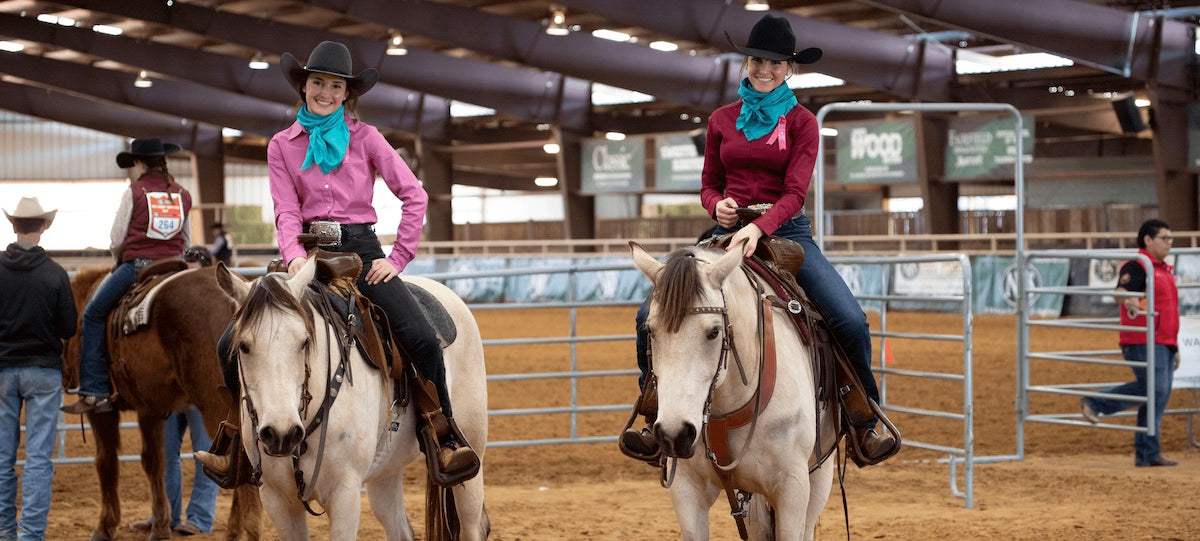
Horse Show Checklist Essentials
Show days can be very exciting, but they can also be very stressful too! There are so many moving parts and you’ve got a lot of things to pull together to make sure you’re prepared for your competition. The ultimate trick for maintaining your sanity when you’re getting ready for a show is a checklist. Having a show checklist is a great way to ensure you have everything you need for both you and your horse!
Checklists provide organization, time management, preparation, stress reduction and safety.
The Trailer
Before traveling to your next horse show you’ll need to perform a thorough safety check to ensure that your trailer is in good working condition and that your horse will be traveling safely. Here are some steps you can take to check over your horse trailer before traveling :


- Check the tires: Check the air pressure and tread depth of all tires, including the spare. Make sure the lug nuts are tight and secure. Replace any damaged or worn tires.
- Inspect the brakes: Test the brakes to make sure they are working properly. Check the brake pads and brake fluid levels, and replace or refill as needed.
- Check the lights: Test all lights, including turn signals, brake lights, and running lights.
- Inspect the hitch: Check the hitch, including the coupler, safety chains, and electrical connections. Make sure they are secure and in good condition.
- Check the interior: Check the floorboards, walls, and ceiling of the trailer for any signs of damage or wear. Make sure all mats are secure and in good condition and replace old shavings/bedding from previous travels.
- Make sure you have a properly stocked first aid kit, copy of your coggins and your emergency contact information is up to date and easily accessible.
COGGINS : A Coggins test, also known as an Equine Infectious Anemia (EIA) test, is a blood test that is performed on horses to detect the presence of antibodies against the virus that causes Equine Infectious Anemia. Equine Infectious Anemia is a viral disease that can affect horses, mules, and donkeys. The virus is transmitted through the exchange of bodily fluids, such as blood or saliva, and can cause severe anemia, fever, weight loss, and other symptoms. There is currently no cure for EIA, and infected horses must be euthanized or isolated for the rest of their lives. Many states and horse shows require a negative Coggins test within the past 12 months as a condition of entry. This helps prevent the spread of EIA by identifying infected horses and preventing them from coming into contact with other horses.
The First-Aid Kit
Bringing a first aid kit to a horse show is always a good idea, as it can help you respond quickly to any injuries or medical emergencies that may arise in both humans and equine!
You’ll want to consider the following :
- Antiseptic solution like Vetericyn, Underwood Topical Wound Spray or Animed Blue Lotion
- Sterile gauze pads, bandages and adhesive tape like Vetrap or Elastikon Elastic Tape
- Aersol Bandage like Alushield or Alu-Med Spray
- Wound dust like Wonder Dust for blood coagulant
- Disposable gloves
- Bandage Scissors
MEDICATIONS :
- Pain Relievers (e.g. Aspirin or Ibuprofen)
- Antihistamines (e.g. Benadryl) for allergic reactions
- Anti-diarrheal meds
- Midol
- Anti-inflammatory medication (e.g Bute)
It's also important to periodically check the expiration dates of the items in your first aid kit and replace any that have expired.
OTHER :
- Digital thermometer to monitor your horse's temperature
- Stethoscope to monitor your horse's heart and lung sounds
- Electrolyte supplements like Apple Elite or Apple-Dex (pastes or granules)
- Eye wash solution like Farnam’s Clear Eyes
It's important to make sure that all the items in your first aid kit are within their expiration dates, and to replace any used or expired items as soon as possible. Additionally, it's a good idea to keep your first aid kit in a waterproof container and to store it in an easily accessible location in case of an emergency.
Other Supplies
It’s just as important to consider what you need on and off your horse.
TACK : Bridle - Saddle - Saddle Pad - Halter - Breastcollar - Cinch - Martingale
GROOMING : Brushes - Combs - Rubber Bands - Detangler - Coat Polish - Hoof Pick
STABLE : Bedding - Grain - Hay - Buckets - Bucket Straps - Manure Fork - Hay Net
CLOTHING : Pack appropriate riding attire, including a helmet, boots, jeans or breeches, and a riding shirt or jacket. Also bring a change of clothes that are comfortable to wear outside of the show ring when you aren’t competing. You’ll want to be sure to check the weather forecast for the location of the horse show to dress accordingly - doesn’t hurt to have a rain coat or heavier jacket on hand tho.
PERSONAL : Pack personal hygiene items such as toothbrush, toothpaste, deodorant and any necessary medications. Bring a book, magazine, or other form of entertainment for any downtime between classes or events. Be sure to bring both cash and credit cards for other purchases that you may need as well as a reliable phone charger.
SNACKS : Bring plenty of snacks and water to stay hydrated and energized!
SUN PROTECTION : Whether you’re showing indoor or outdoor it’s always a good idea to have sunscreen, a hat and some BEX sunglasses on-hand.
Be sure to also check with the horse show organizers for any additional rules or requirements. And remember to pack everything the 1-3 days before to ensure you have everything you need for a successful horse show!












